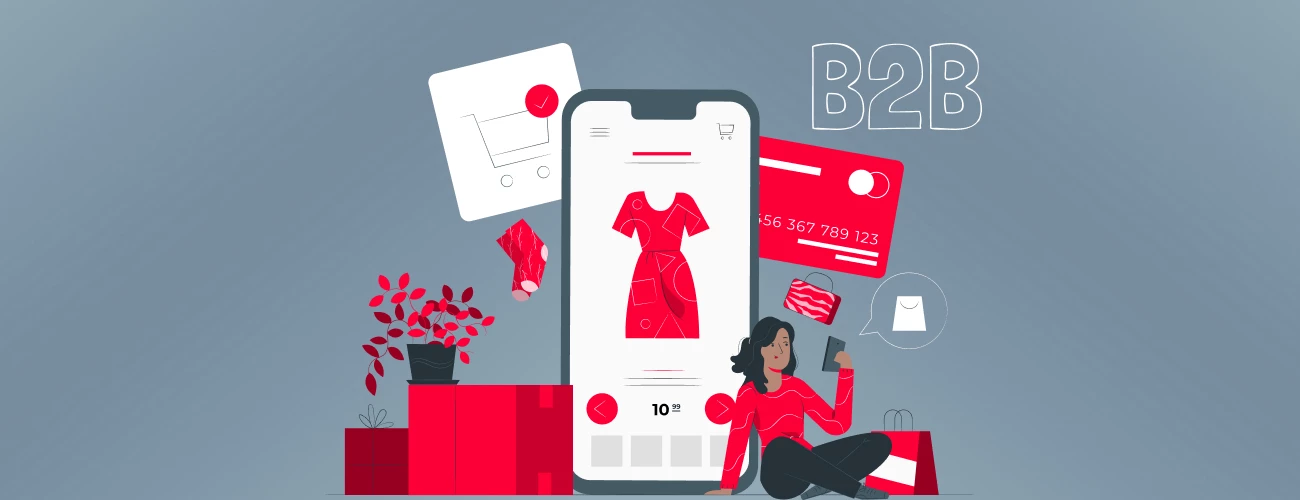Best website for b2b sales

A B2B website is different from a B2C website and is considered to be a much more complex project. In this article, the MEGASITE team will tell you about the mechanics of B2B website interaction with customers, and what tasks this resource should perform in order to make constant sales from it.
B2B website and what tasks it solves
A B2B ("business to business") website is designed to facilitate communication between two companies. While sales on B2C websites are built primarily through emotions, B2B resources present the benefits of cooperation with a focus on the benefits for both parties.
What does it give a business to have a B2B website:
- Lead generation and getting applications is the most important function of the resource;
- increasing customer recognition, trust and loyalty (image strengthening) - creating the right image in the eyes of customers;
- 24/7 availability of information about services and products - this includes communicating expertise, service values, and obtaining technical specifications;
- expanding the audience and entering foreign markets;
- reducing the cost of servicing current customers.
A good website should "close" several functions at once, because it sells, informs, and creates the necessary image of the company. To what extent each function should be realized depends on the specific website.
For manufacturers of relatively uncomplicated products (e.g. finishing materials, doors) in the B2B sphere, the primary task will be to sell. If we are talking about companies offering complex products, then the information and image functions come first, as the goal here is to sell their expertise and talk about the product.
Development Features and Functionality
A website for the B2B sector must fulfill two basic requirements:
- ease of use;
- specific functionality that is required for the business to business sector.
Convenience
Regardless of whether the end user of the resource is B2B or B2C, the site should be as user-friendly as possible. Entrepreneurial customers who come to a B2B site, make purchases and research information on B2C sites as well, so they have certain experiences and user expectations.
Modern B2C portals have great functionality, intuitive navigation and a lot of mechanics that maximize ease of use. So when we talk about B2B, its convenience should not be in second place either. IT company MEGASITE creates corporate resources taking into account general UX recommendations for e-commerce:
- A convenient online experience of interacting with the company;
- transparency - clear pricing logic, delivery terms and conditions, terms of cooperation, etc;
- accuracy and relevance of data - timely update of information on availability of goods, prices, terms of receipt, stock balances.
Technical solutions
When developing a B2B website, all nuances should be taken into account. Often such projects require specific solutions, for example:
- personal cabinet for dealers - helps to significantly facilitate work with the dealer network. You can view complete information about all orders, download an individual price list, add sub-dealers, get acquainted with promotions and special offers directly in your personal cabinet, etc...;
- alternative solutions instead of a traditional catalog - this option is suitable for manufacturing companies that have too large an assortment of products and they are difficult to classify. In this case, you can offer a tool that selects products according to certain criteria;
- information on stock balances - this tool helps to determine the order volume. You can integrate with the accounting system of warehouses where goods are placed, then the data will be updated in real time;
- documentation request in a couple of clicks - clients and partners can use this function in their personal cabinet at any time, and the company's employees will save their time;
- Pre-ordering of goods that are only expected to be delivered and are still in production.
As you can see, the functionality on a B2B website can be quite extensive, but that doesn't mean that all companies need such a complex structure. To understand exactly what functions a resource should perform, we need to figure out the following:
- what the main sections should be;
- systems to be integrated;
- user types;
- usage scenarios;
- data security requirements.
MEGASITE has extensive experience in B2B development, so we always tell our clients which solutions are right for their projects.
Stages of B2B website creation
If we consider the stages of development of B2B projects, they are not radically different from other types of sites. Each B2B site goes through the following stages:
- Preliminary research - includes studying all the company's business processes, solutions available on the market, needs and growth points. Such in-depth analytics gives an opportunity to look at the project as a whole and understand where to move.
- Terms of Reference - drawing up a detailed ToR, where technical, functional and content characteristics are specified.
- Design and web design - prototyping pages and design approvals.
- Frontend and backend - development of the interface and "innards" of the site.
- Testing and launching the resource.
- SEO-promotion - work to increase the "visibility" of the site in Google and other search engines.
- Promotion - promotion of the site through contextual advertising and targeting (as needed).
Our team develops projects for B2B and B2C, as well as mobile applications and complex custom projects.
We offer the following services:
If you are looking for responsible contractors for your project, we invite you for a free consultation. Leave your contacts via the feedback form on our website or call us at +38 (095) 1000 119
Your project
Call/write:


